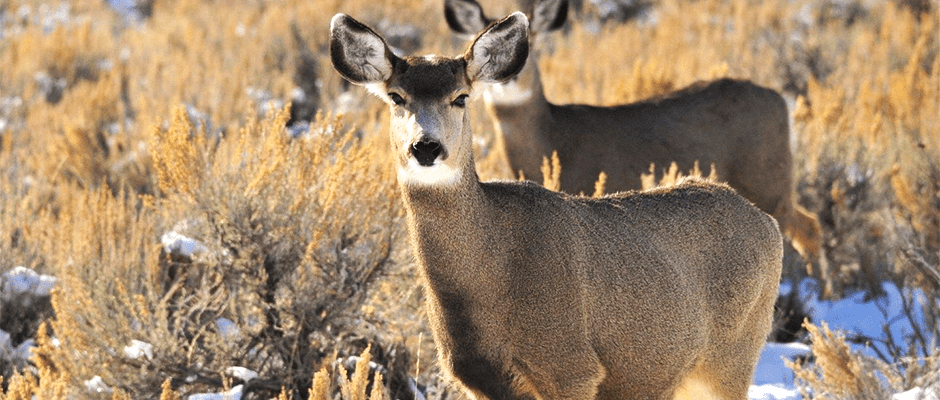Share this article
Migration corridors follow food, avoid human disturbance
Looking across the Wyoming landscape, it might seem like mule deer (Odocoileus hemionus) could pick just about anywhere to cross between the high country, where they spend the summer, to the valleys, where they winter. But researchers found that mule deer appear to choose their routes particularly — in search of corridors that are easily traversed, where they can find food and where they can avoid humans.
“When you look at some of these landscapes, it doesn’t necessarily seem obvious that those routes are associated with those types of things,” said TWS member Kevin Monteith, assistant professor at the University of Wyoming’s Haub School of Environmental and Natural Resources and the lead author on the paper in Ecological Applications. “There are strong relationships with them selecting for drier sites, especially for stopovers, sites that green up early, and avoiding anthropomorphic disturbances.”
The study is part of a growing body of research by the University of Wyoming on the state’s big game migrations, and an increasing appreciation for the important role migration corridors play in the life history of migrating species.
“A migratory route isn’t just a line on a map,” Monteith said. “It has a function in and of itself. In some instances, animals can spend months out of the year migrating.”
Monteith’s team included biologists from the university, The Nature Conservancy and Western EcoSystem Technologies, Inc. Their research focused on spring migration pathways of mule deer in the Atlantic Rim of southern Wyoming and the upper Green River Basin in western Wyoming. The corridors included sections where the deer passed through quickly and others where they spent several days feeding on new growth.
In both corridors, researchers found, the deer appeared to choose pathways they could easily traverse and that gave them access to early green-up, allowing them to prolong access to nutritional young plants as they moved. They chose to linger in dry locations on south-facing slopes with low human disturbance, supporting previous research on the importance of stopovers as a way to refuel along their journey.
“There’s a reason they move where they do,” Monteith said, “and it’s not just to get from Point A to Point B.”
In some cases, his team found, human disturbances could force the deer to make detours that could impact their fitness, even if the impacts didn’t completely sever the corridor.
“It is critical for migrating animals to not only have access to stopovers where snow recedes and green-up occurs predictably early,” the wrote, “but to also have readily traversable pathways that connect them.”
Header Image: Wyoming mule deer seek migration corridors they can easily traverse that give them access to food. ©USFWS








